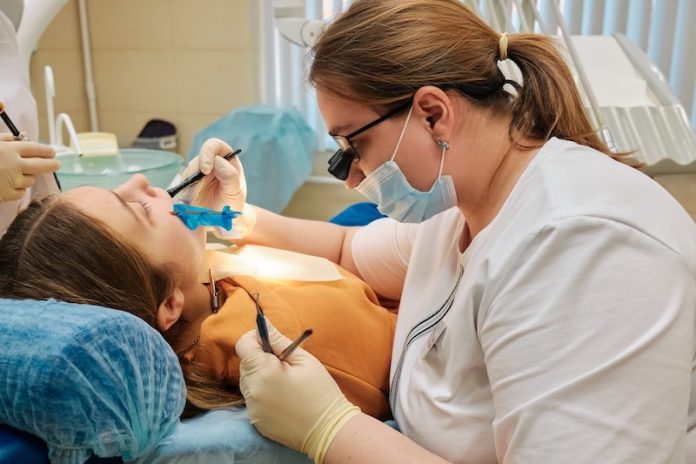
A recent study reveals that the number of opioid prescriptions provided by dentists to patients in the United States has declined, especially among young adults, since the start of the COVID-19 pandemic.
However, the pace of reduction in opioid prescriptions slowed in the post-pandemic period.
Dentists and Opioid Prescriptions
Dentists have historically prescribed opioids to manage pain following dental procedures, but research has shown that opioids are often unnecessary for dental care and carry risks of misuse and addiction.
Researchers from the University of Michigan Medical School and School of Dentistry conducted a study to examine the trends in opioid prescriptions by dentists in the U.S. before and during the COVID-19 pandemic. They analyzed data from 2016 to the end of 2022.
The study found that the number of dental opioid prescriptions in the U.S. declined by 45% from 2016 to the end of 2022. This suggests that efforts to reduce opioid use in dental care were successful.
Despite the reduction, 7.4 million dental patients of all ages still filled opioid prescriptions in 2022, indicating that opioid use remains prevalent in dental care.
Impact on Teens and Young Adults
The study showed that opioid prescriptions to teenagers and young adults, who are at higher risk for opioid-related problems, continued to decline even after the pandemic-related pause in dental care.
The reduction in opioid prescriptions filled by dental patients was more significant in the years leading up to the pandemic (2016-2019) compared to the rate of decline from June 2020 to December 2022. This slowdown in the decline is a concern.
The researchers estimated that between June 2020 and December 2022, 6.1 million more dental opioid prescriptions were filled than if pre-pandemic trends had continued.
This suggests that the pandemic may have influenced dental professionals to prescribe opioids more frequently.
Comparison with British Dentists
The study also found that American dentists and oral surgeons continued to prescribe opioids at a rate four times higher than British dentists did in 2016, indicating that there is room for further reduction.
Several factors may have contributed to the slowing decline in dental opioid prescriptions during the pandemic.
Dentists may have prescribed opioids more readily out of concern that patients could not easily access follow-up care during lockdowns.
While progress has been made in reducing opioid prescribing in dental care, the study emphasizes the need for continued efforts to further reduce unnecessary opioid prescriptions.
The goal is to find safer and more targeted alternatives to opioids in dental pain management.
Conclusion
Efforts to reduce opioid prescriptions in dental care have seen success in the U.S., but the pace of decline slowed during the pandemic.
Dental professionals should prioritize alternatives to opioids for pain management, especially among young patients, to mitigate the risks associated with opioid use.
Continued research and guidelines are essential to address this issue effectively.
If you care about pain, please read studies about how to manage your back pain, and Krill oil could improve muscle health in older people.
For more information about pain, please see recent studies about how to live pain-free with arthritis, and results showing common native American plant may help reduce diarrhea and pain.
The research findings can be found in PLOS ONE.
Follow us on Twitter for more articles about this topic.
Copyright © 2023 Knowridge Science Report. All rights reserved.



